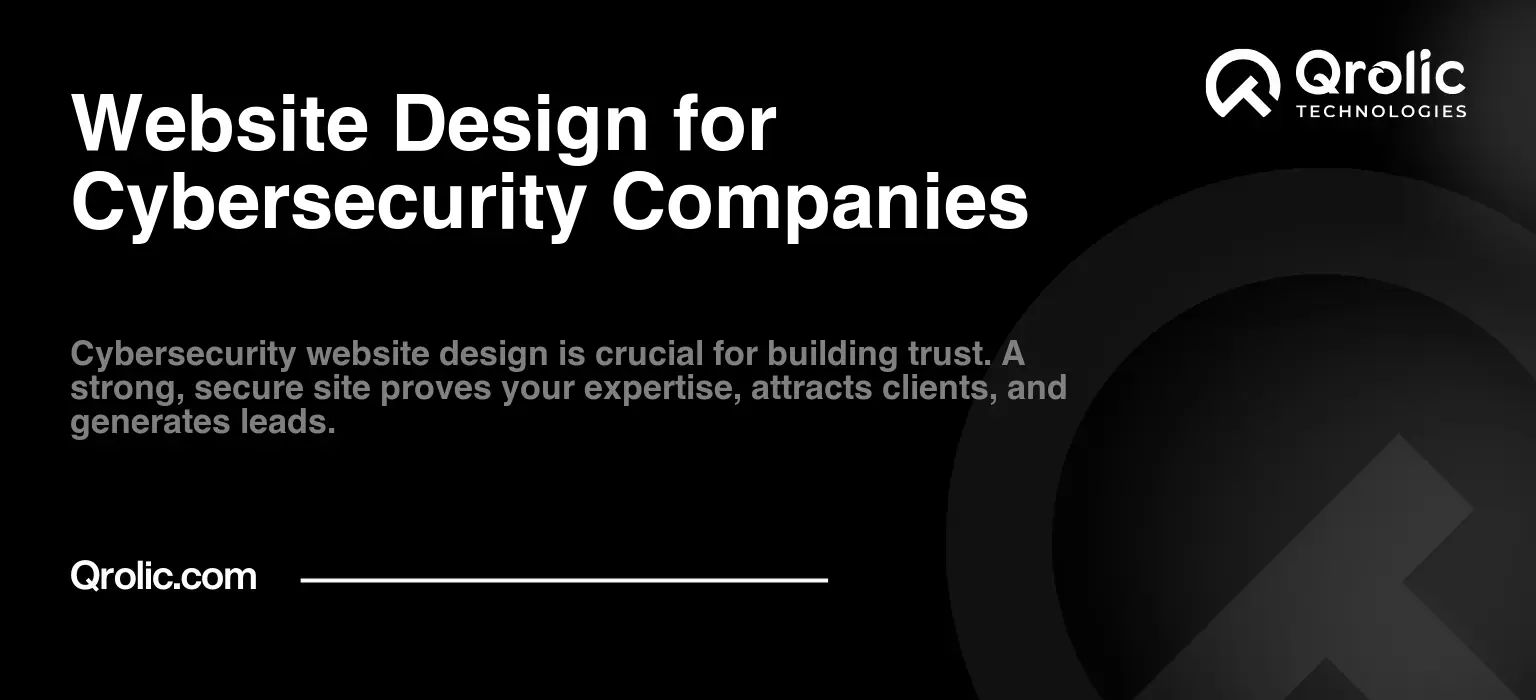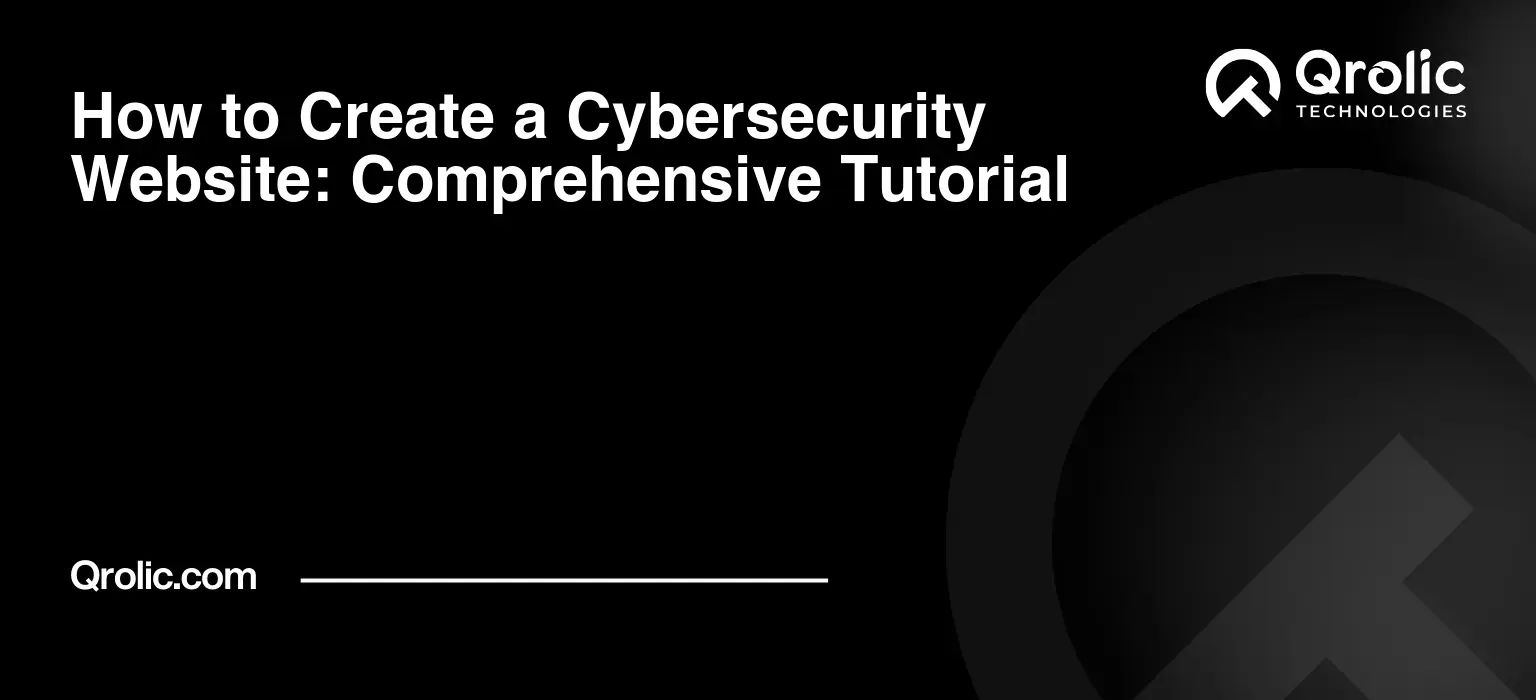Quick Summary:
- Build trust and showcase expertise with professional design.
- Ensure your website is mobile-friendly, fast, and easy to use.
- Optimize for search engines and secure your own site.
- Use clear calls-to-action to generate quality leads.
Table of Contents
- Why Your Cybersecurity Website Design Matters: Building Trust in a Digital Battlefield
- The First Impression: Establishing Authority and Expertise
- Building Credibility & Trust
- Generating Leads & Driving Conversions
- The Core Elements of an Effective Data Protection Website: Functionality and User Experience
- User-Friendly Navigation: Guiding Visitors Seamlessly
- Information Architecture: Presenting Complex Information Clearly
- Speed & Performance: Ensuring a Fast and Responsive Experience
- Accessibility: Reaching a Wider Audience
- SEO for IT Security Web Development: Ranking High in a Competitive Landscape
- Keyword Research: Identifying the Right Terms
- On-Page Optimization: Optimizing Your Website Content
- Off-Page Optimization: Building Authority and Backlinks
- Technical SEO: Ensuring a Crawlable and Indexable Website
- Website Security: Protecting Your Own Digital Assets
- SSL Certificate: Encrypting Data Transmission
- Web Application Firewall (WAF): Preventing Attacks
- Regular Security Scans: Identifying Vulnerabilities
- Strong Passwords & User Authentication: Protecting Access
- Content Management System (CMS) Security: Keeping Your Platform Secure
- Data Backup & Recovery: Preparing for the Worst
- Design Trends in Cybersecurity Website Design: Staying Modern and Relevant
- Dark Mode: Emphasizing Security and Sophistication
- Minimalist Design: Focusing on Essential Information
- Bold Typography: Making a Statement
- Micro-Animations: Adding Subtle Interactivity
- Illustration: Communicating Complex Concepts Visually
- Data Visualization: Presenting Data in an Engaging Way
- Choosing the Right Technology Stack for Your Cybersecurity Website
- Content Management System (CMS): WordPress vs. Headless CMS
- Programming Languages: Front-End and Back-End Development
- Hosting Provider: Choosing a Secure and Reliable Platform
- Security Tools: Integrating Security Features into Your Website
- Measuring Success: Website Analytics and KPIs
- Key Performance Indicators (KPIs):
- Website Analytics Tools:
- Qrolic Technologies: Your Partner in Building Secure and Effective Cybersecurity Websites
- Our Cybersecurity Website Design Services Include:
- Why Choose Qrolic Technologies?
- The Future of Cybersecurity Website Design
- Emerging Technologies:
- Evolving Security Threats:
- Adapting to Change:
Why Your Cybersecurity Website Design Matters: Building Trust in a Digital Battlefield
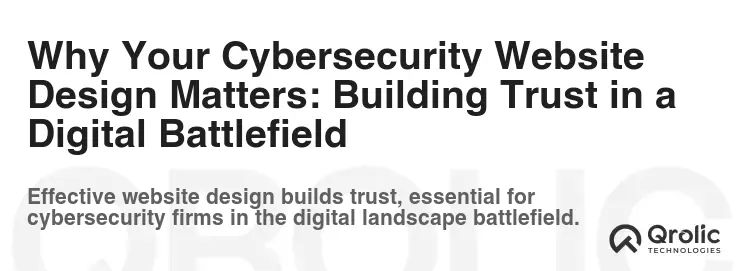
In the high-stakes world of cybersecurity, trust is paramount. A shoddy, outdated website can be a bigger vulnerability than a weak firewall. Your website isn’t just a digital brochure; it’s the first line of defense in building credibility and attracting clients who need your expertise to protect their valuable data. Let’s delve into why cybersecurity website design is critical and how to create a website that inspires confidence and converts leads.
The First Impression: Establishing Authority and Expertise
Imagine a potential client searching for “managed security services.” They click on your website. What do they see? A clunky, unresponsive design that looks like it was built in the 90s? Or a modern, sleek, and informative platform that showcases your expertise? The answer directly impacts their perception of your capabilities.
- Visual Appeal & Professionalism: A visually appealing website signals competence. Think clean layouts, professional color palettes, and high-quality imagery. A professional appearance demonstrates you take your business – and therefore your clients’ security – seriously.
- Clear Value Proposition: Within seconds, visitors should understand what you offer and the value you bring. Use concise headlines and compelling visuals to communicate your unique selling points. Are you focused on SMBs, enterprise solutions, or specialized industries? Make it immediately clear.
- Mobile-First Approach: In today’s world, most searches happen on mobile devices. A mobile-responsive website is not just a nice-to-have; it’s a necessity. A seamless experience on any device improves user engagement and reduces bounce rates.
Building Credibility & Trust
Cybersecurity is about trust. Your website needs to demonstrate that you are a reliable and trustworthy partner.
- Showcase Your Expertise: Highlight your certifications, accreditations, and industry recognition prominently. Displaying logos of reputable organizations and awards can instantly boost your credibility.
- Case Studies & Testimonials: Real-world examples of your success are invaluable. Share case studies that detail the challenges you faced, the solutions you implemented, and the positive outcomes you achieved for your clients. Include testimonials from satisfied clients to add social proof.
- Team Bios & Expertise: Introduce your team and highlight their expertise. Showcasing the qualifications and experience of your team members humanizes your company and builds confidence in your capabilities.
- Transparent Security Measures: Ironically, demonstrating your own website’s security can be a powerful trust signal. Display security badges, SSL certificates, and information about your data privacy policies.
Generating Leads & Driving Conversions
A well-designed cybersecurity website isn’t just about looking good; it’s about generating leads and driving conversions.
- Clear Call-to-Actions (CTAs): Guide visitors towards desired actions, such as requesting a demo, downloading a whitepaper, or contacting your sales team. Use clear, concise, and visually appealing CTAs throughout your website.
- Lead Magnet Offers: Offer valuable resources, such as free cybersecurity audits, checklists, or ebooks, in exchange for contact information. This allows you to capture leads and nurture them through the sales funnel.
- Contact Forms & Communication: Make it easy for potential clients to contact you. Include contact forms on multiple pages and ensure your contact information is readily available. Promptly respond to inquiries to demonstrate your responsiveness and professionalism.
- Live Chat Support: Consider implementing live chat support to provide instant assistance to visitors and answer their questions in real-time. This can significantly improve engagement and conversion rates.
The Core Elements of an Effective Data Protection Website: Functionality and User Experience
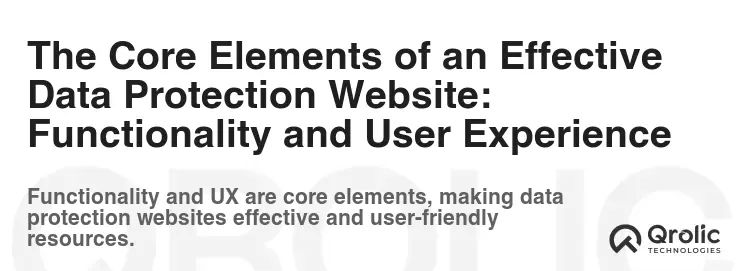
Beyond aesthetics, functionality and user experience (UX) are critical components of a successful cybersecurity website. If visitors can’t easily navigate your website, find the information they need, or understand your services, they’ll likely leave.
User-Friendly Navigation: Guiding Visitors Seamlessly
Intuitive navigation is essential for a positive user experience.
- Clear Menu Structure: Organize your website content into a logical and easy-to-understand menu structure. Use clear and descriptive labels for each menu item.
- Search Functionality: Implement a robust search function that allows visitors to quickly find the information they’re looking for.
- Breadcrumbs: Use breadcrumbs to help visitors understand their location within the website and easily navigate back to previous pages.
- Mobile-Responsive Design: As mentioned earlier, ensure your website is fully responsive and provides a seamless experience on all devices.
Information Architecture: Presenting Complex Information Clearly
Cybersecurity can be complex. Your website needs to present information in a clear, concise, and easily digestible manner.
- Concise Language: Avoid technical jargon and use plain language that your target audience can understand.
- Visual Aids: Use visuals, such as infographics, diagrams, and videos, to explain complex concepts and processes.
- White Space: Use white space to create visual breathing room and make your content easier to read.
- Scannable Content: Break up long blocks of text with headings, subheadings, bullet points, and images to make your content more scannable.
Speed & Performance: Ensuring a Fast and Responsive Experience
Website Speed is a critical factor for both user experience and SEO.
- Optimize Images: Compress images to reduce file size without sacrificing quality.
- Minimize HTTP Requests: Reduce the number of HTTP requests by combining files, using CSS sprites, and leveraging browser caching.
- Choose a Reliable Hosting Provider: Select a hosting provider that offers fast and reliable server performance.
- Content Delivery Network (CDN): Use a CDN to distribute your website content across multiple servers, improving loading times for users around the world.
Accessibility: Reaching a Wider Audience
Ensure your website is accessible to users with disabilities by following accessibility guidelines.
- Alternative Text for Images: Provide descriptive alternative text for all images.
- Keyboard Navigation: Ensure your website can be navigated using a keyboard.
- Color Contrast: Use sufficient color contrast between text and background.
- Screen Reader Compatibility: Ensure your website is compatible with screen readers.
SEO for IT Security Web Development: Ranking High in a Competitive Landscape
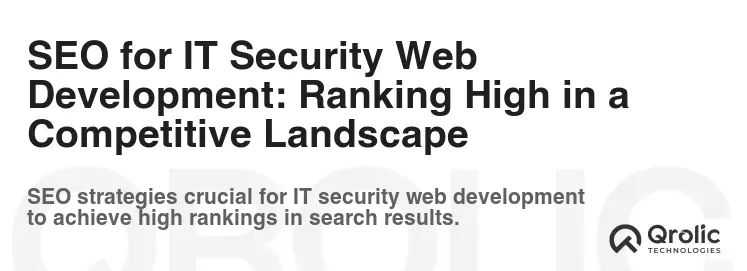
In the competitive world of cybersecurity, ranking high in search engine results is crucial for attracting organic traffic and generating leads. Implementing a comprehensive SEO strategy is essential for achieving this goal.
Keyword Research: Identifying the Right Terms
Keyword research is the foundation of any successful SEO strategy.
- Identify Relevant Keywords: Use keyword research tools to identify the keywords and phrases that your target audience is using to search for cybersecurity services.
- Long-Tail Keywords: Focus on long-tail keywords (longer, more specific phrases) to target niche audiences and improve your chances of ranking higher.
- Competitor Analysis: Analyze your competitors’ websites to identify the keywords they are targeting.
On-Page Optimization: Optimizing Your Website Content
On-page optimization involves optimizing your website content and structure to improve its visibility in search engine results.
- Title Tags: Optimize your title tags with relevant keywords.
- Meta Descriptions: Write compelling meta descriptions that entice users to click on your website.
- Header Tags: Use header tags (H1, H2, H3, etc.) to structure your content and highlight important keywords.
- Content Optimization: Write high-quality, informative, and engaging content that is optimized for your target keywords.
- Image Optimization: Optimize your images with descriptive file names and alternative text.
- Internal Linking: Use internal links to connect related pages on your website and improve navigation.
Off-Page Optimization: Building Authority and Backlinks
Off-page optimization involves building authority and backlinks from other websites to improve your website’s ranking.
- Link Building: Earn high-quality backlinks from reputable websites in your industry.
- Social Media Marketing: Promote your website and content on social media platforms.
- Directory Submissions: Submit your website to relevant online directories.
- Guest Blogging: Write guest posts for other websites in your industry.
- Online Reputation Management: Monitor and manage your online reputation to ensure a positive brand image.
Technical SEO: Ensuring a Crawlable and Indexable Website
Technical SEO involves optimizing your website’s technical aspects to ensure that search engines can easily crawl and index it.
- XML Sitemap: Submit an XML sitemap to search engines to help them crawl your website more efficiently.
- Robots.txt: Use a robots.txt file to control which pages search engines can crawl.
- Mobile-Friendliness: Ensure your website is mobile-friendly.
- Website Speed: Optimize your website’s speed and performance.
- Structured Data Markup: Use structured data markup to provide search engines with more information about your website content.
- SSL Certificate: Install an SSL certificate to encrypt your website traffic and improve security.
Website Security: Protecting Your Own Digital Assets
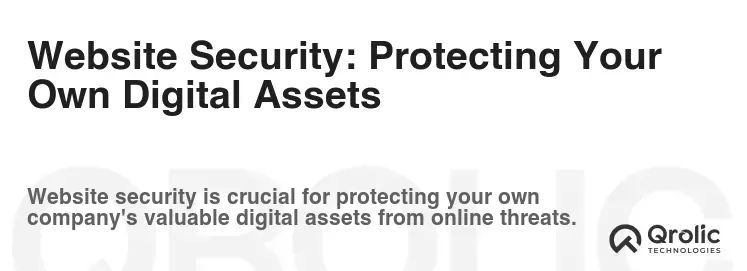
It’s ironic if a cybersecurity company has a vulnerable website. You need to practice what you preach.
SSL Certificate: Encrypting Data Transmission
Install an SSL certificate to encrypt data transmission between your website and visitors’ browsers. This protects sensitive information, such as passwords and credit card numbers, from being intercepted.
Web Application Firewall (WAF): Preventing Attacks
Implement a web application firewall (WAF) to protect your website from common attacks, such as SQL injection and cross-site scripting (XSS).
Regular Security Scans: Identifying Vulnerabilities
Conduct regular security scans to identify vulnerabilities in your website and address them promptly.
Strong Passwords & User Authentication: Protecting Access
Enforce strong passwords and implement multi-factor authentication for all user accounts.
Content Management System (CMS) Security: Keeping Your Platform Secure
Keep your CMS and its plugins up to date with the latest security patches.
Data Backup & Recovery: Preparing for the Worst
Implement a robust data backup and recovery plan to ensure that you can quickly restore your website in the event of a security breach or disaster.
Design Trends in Cybersecurity Website Design: Staying Modern and Relevant

The world of web design is constantly evolving. Staying up-to-date with the latest design trends is crucial for maintaining a modern and relevant website.
Dark Mode: Emphasizing Security and Sophistication
Dark mode is a popular design trend that can create a visually striking and sophisticated look for your website. It can also help to reduce eye strain and improve battery life on mobile devices.
Minimalist Design: Focusing on Essential Information
Minimalist design focuses on simplicity and clarity. It uses white space, clean typography, and minimal visual elements to create a clean and uncluttered user experience.
Bold Typography: Making a Statement
Bold typography can be used to make a statement and draw attention to important information.
Micro-Animations: Adding Subtle Interactivity
Micro-animations are small, subtle animations that can add interactivity and engagement to your website.
Illustration: Communicating Complex Concepts Visually
Illustrations can be used to communicate complex concepts visually and add personality to your website.
Data Visualization: Presenting Data in an Engaging Way
Data visualization techniques can be used to present data in an engaging and easy-to-understand way.
Choosing the Right Technology Stack for Your Cybersecurity Website
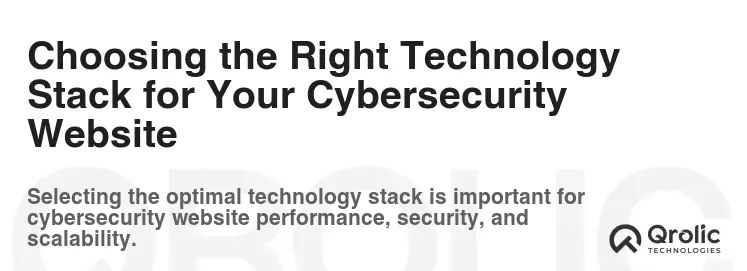
The technology stack you choose for your website can significantly impact its performance, security, and scalability.
Content Management System (CMS): WordPress vs. Headless CMS
- WordPress: WordPress is a popular CMS that offers a wide range of themes, plugins, and customization options. It’s relatively easy to use and maintain.
- Headless CMS: A headless CMS separates the content repository from the presentation layer. This allows you to deliver content to any device or platform using APIs.
Programming Languages: Front-End and Back-End Development
- Front-End: HTML, CSS, JavaScript
- Back-End: Python, Node.js, PHP, Java
Hosting Provider: Choosing a Secure and Reliable Platform
Choose a hosting provider that offers secure and reliable server performance. Consider factors such as uptime, security features, and customer support.
Security Tools: Integrating Security Features into Your Website
Integrate security tools, such as WAFs and vulnerability scanners, into your website to protect it from attacks.
Measuring Success: Website Analytics and KPIs
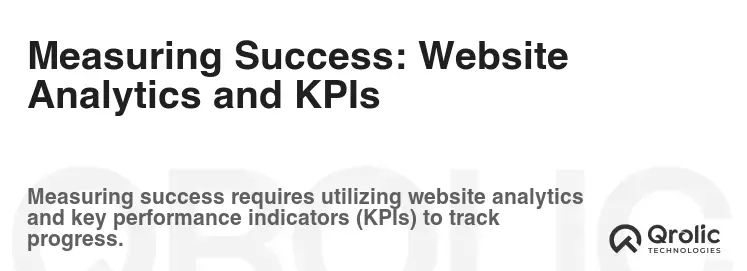
Measuring the success of your cybersecurity website is crucial for identifying areas for improvement and optimizing your marketing efforts.
Key Performance Indicators (KPIs):
- Website Traffic: Track the number of visitors to your website.
- Bounce Rate: Monitor the percentage of visitors who leave your website after viewing only one page.
- Conversion Rate: Measure the percentage of visitors who complete a desired action, such as submitting a contact form or requesting a demo.
- Lead Generation: Track the number of leads generated by your website.
- Customer Acquisition Cost (CAC): Calculate the cost of acquiring a new customer through your website.
- Return on Investment (ROI): Measure the return on investment of your website and marketing efforts.
Website Analytics Tools:
- Google Analytics: A free web analytics service that provides detailed insights into your website traffic and user behavior.
- Google Search Console: A free tool that helps you monitor your website’s performance in Google search results.
- Other Analytics Platforms: Consider using other analytics platforms to gather more comprehensive data.
Qrolic Technologies: Your Partner in Building Secure and Effective Cybersecurity Websites

At Qrolic Technologies (https://qrolic.com/), we understand the unique challenges and requirements of building websites for cybersecurity companies. We specialize in IT security web development and creating data protection websites that are not only visually appealing and user-friendly but also secure, compliant, and optimized for search engines.
Our Cybersecurity Website Design Services Include:
- Custom Website Design: We create custom website designs that reflect your brand identity and showcase your expertise.
- Responsive Web Development: We ensure your website is fully responsive and provides a seamless experience on all devices.
- SEO Optimization: We optimize your website for search engines to help you attract organic traffic and generate leads.
- Security Audits & Implementation: We conduct security audits and implement security measures to protect your website from attacks.
- Content Creation & Marketing: We create high-quality content and develop marketing strategies to promote your website and services.
- Website Maintenance & Support: We provide ongoing website maintenance and support to ensure your website is always up-to-date and secure.
Why Choose Qrolic Technologies?
- Industry Expertise: We have extensive experience in building websites for cybersecurity companies.
- Security Focus: Security is our top priority. We implement industry-leading security practices to protect your website and data.
- Customer-Centric Approach: We work closely with our clients to understand their needs and goals.
- Results-Driven Solutions: We are committed to delivering results-driven solutions that help our clients achieve their business objectives.
Contact Qrolic Technologies today to learn more about how we can help you build a secure and effective cybersecurity website!
The Future of Cybersecurity Website Design
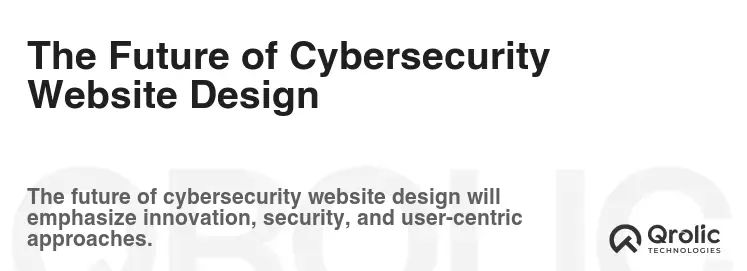
The landscape of cybersecurity and web design is constantly changing. Staying ahead of the curve is crucial for maintaining a competitive edge.
Emerging Technologies:
- Artificial Intelligence (AI): AI can be used to personalize website content, automate tasks, and improve security.
- Blockchain: Blockchain technology can be used to enhance website security and data privacy.
- Virtual Reality (VR) and Augmented Reality (AR): VR and AR can be used to create immersive and engaging website experiences.
Evolving Security Threats:
- Ransomware: Ransomware attacks are becoming increasingly sophisticated.
- Phishing: Phishing attacks are becoming more targeted and personalized.
- Supply Chain Attacks: Supply chain attacks are becoming more common.
Adapting to Change:
- Continuous Learning: Stay up-to-date with the latest cybersecurity threats and web design trends.
- Agile Development: Use agile development methodologies to adapt quickly to changing requirements.
- Collaboration: Collaborate with other cybersecurity professionals and web developers to share knowledge and best practices.
By embracing these principles, you can create a cybersecurity website that is not only visually appealing and user-friendly but also secure, effective, and future-proof. Remember, your website is a critical component of your overall cybersecurity strategy. Invest in it wisely.
